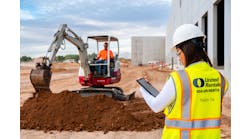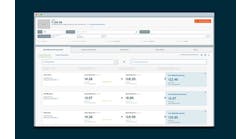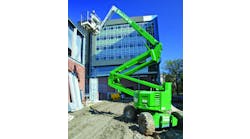When it comes to providing safe operating instruction to rental customers of aerial equipment, the size of your rental company doesn't matter — it's completely irrelevant. The quantity of aerial equipment in the fleet can be one or 100, but the level of customer familiarization and training required for each lift rental must be equal. Each rental carries the same risk to the renter and as such the same training guidelines should be required and followed for each transaction. It only takes one accident to affect that customer and your business forever.
“The owner of a small rental company involved in renting a few lifts must understand, whether you have two, 20 or 200 lifts, your responsibility and liability remains the same,” says Gary Morse, president of Essex Rental & Sales Center, a one-location rental company in Essex Junction, Vt.
Before rental company personnel can provide safe operating instruction to their customers, they must first be trained and certified on the safe use of aerial equipment themselves. Most rental equipment companies RER interviewed for this article stated that every employee, from counter personnel and drivers, to mechanics, are certified operators who fully understand the safe use of each aerial machine in the company's fleet.
For Sugar Grove, Ill.-based Metrolift, all sales personnel must receive a minimum of eight hours of International Powered Access Federation/Aerial Work Platform Training in addition to Terex telehandler forklift training. In addition, the company's delivery personnel and field service technicians have completed Terex's AWP and telehandler courses.
Sims Crane & Equipment Co.'s president Steve Stodghill recommends that all employees read and understand the ANSI 92.5-2006 boom or ANSI A92.6 scissorlift manual of responsibilities as well as the operations manuals for the aerial equipment in the fleet.
“Ask questions if you are not clear to any instructions,” says Stodghill, whose Tampa, Fla.-based company specializes in lift equipment. “We find in 99 percent of safety-related accidents the failure to understand responsibilities and individual requirements (by law) and/or the failure to read, understand and comply with operators manual instructions is the root cause of accidents.”
Birch Equipment Rental & Sales, a multi-location rental company headquartered in Bellingham, Wash., that has more than 40,000 pieces of equipment in its fleet, provides in-house training to all staff members that incorporates equipment operations manuals, troubleshooting and frequently asked questions, as well as hands-on operator training.
“Birch employees are inundated with hands-on operation and are regularly asked questions from operations manuals to keep their skills current,” says Jeninne Milton, Birch Equipment, assistant manager. “We also use mystery shopping programs where rental processes, questions about safety and operation of equipment are evaluated and scored.”
The company keeps a training log for each piece of rental equipment that every employee is checked off on once his or her training is complete. The goal for Birch's employees is to have 100 percent of the training log checked off, and requires everyone to restart a fresh training log each year so that the information is constantly revisited and nothing is overlooked.
Birch Equipment also takes advantage of all opportunities by aerial equipment manufacturers to train its staff, including everyone from the mechanics to its in-house and outside sales people. Once these employees have completed the train-the-trainer program, they can then certify customers on ANSI and OSHA regulations.
For smaller rental companies with fewer capital and human resources, taking advantage of vendor-provided training programs is a smart and effective way to train both personnel and customers on the safe use of aerial equipment.
“It is very important for small to mid-sized rental companies to lean on their vendors for support with safety training,” says Josh Nickell, vice president, Nickell Equipment Rental, Newnan, Ga. “Smaller companies have limited resources to focus on the ever-changing ANSI and OSHA requirements. Yet, this doesn't make it any less important. One mistake can cause someone to get injured, which can be a very costly, if not business-ending, accident.”
Most aerial equipment suppliers offer training and certification on their units in addition to instruction materials such as written guidelines and videos that can be referenced again and again. These manufacturers should also make themselves easily accessible to dealers and customers any time they need additional support.
“Our lift fleet is entirely Genie and their customer support in offering safety training at our facility, and service to train our technicians in depth about proper inspection requirements, is superb,” Essex' Morse says. “It's very important for us to have that degree of manufacturer/dealer relationship. The lift manufacturers themselves are your first line for receiving the necessary training. Some manufacturers are now offering online training and many of the sales reps will conduct on-site training.”
According to John Hofmeyer, Metrolift's vice president of sales, his company has taken advantage in the past year of a full-day telehandler training session given by Terex, as well as a full-day AWPT training session for scissors and booms facilitated by Skyjack.
“We also utilize third-party trainers who offer consistent training curriculum and on-site training consistent with training offered by Metrolift,” Hofmeyer says.
With the rental company personnel properly trained and certified it's time to lay out the steps for familiarizing and training customers upon delivery of an aerial lift rental. First, the rental company employee should go over the basic safety and operation features of the machine. In addition, a safety manual, the manufacturer's operations manual, ANSI and OSHA documentation, and the necessary fall protection equipment should be provided, along with clear instructions for its proper use. Finally, require customers to sign an agreement acknowledging that they have been familiarized with the unit upon delivery.
To help supplement its customers' safety training, Nickell Equipment offers aerial work platform safety certification monthly. For a small fee, two certified AWP safety trainers walk customers through all of the different types of lift equipment and the safety features and hazards associated with each.
Essex' employees make it a point to lead by example, using safe operating practices and wearing fall protection in the rental yard at all times.
“Our technicians, sales associates and delivery persons who interact with the customer, receive official training and are qualified to adequately perform the familiarization training,” says Morse. “Following the guidelines for proper training, our employees are required to wear proper fall protection in the yard when conducting ‘ready to rent’ inspections, loading and unloading, or simply moving the lifts around the yard.”
Essex' demonstration of proper use goes a long way in showing customers how aerial equipment is safely operated.
Once the customer is on his or her own with the equipment, Birch Equipment's Milton suggests following up with a phone call to make sure the aerial equipment is performing properly and to find out if the customer has any follow-up questions. If the customer is unavailable at the time of the call, Milton advises leaving a message and documenting your actions. In addition, Birch Equipment personnel are available 24 hours a day via an answering service.
“Anyone, anytime can call our store and be connected with a staff member,” Milton explains. “It is our practice to never leave a customer hanging and we have a full service team available to them. Because our staff is fully trained and utilizes a strict company protocol, we can ensure the customer has all of the necessary information to safely use the equipment.”
Nickell advises other rental companies to be careful and conscientious when recommending aerial equipment for any application. “In this industry it can be common to help customers come up with creative solutions to get their job done, but when dealing with aerial work platforms it is very important to go by the book and only recommend solutions for which the equipment is explicitly intended,” says Nickell. “I would also recommend increasing general liability coverage when adding aerial equipment to a fleet.
“It's also important to already have a plan of action ready in the event of an accident. What happens the first few hours after an accident can decide the fate of a potential future lawsuit.”
The importance of proper and thorough safety training for rental company employees and their customers cannot be overstated. Many accidents can be prevented by enforcing strict training and familiarization guidelines within the rental company and diligently updating training procedures and providing refresher courses on an annual basis.
“Lift safety, as well as all safety, starts at the top with the owner,” Morse says. “It's not necessary for the owner to be involved with every little aspect of the program, but it is the owner's directives that are essential. Being proactive is paramount when it comes to employee and customer safety in the lift industry.”





